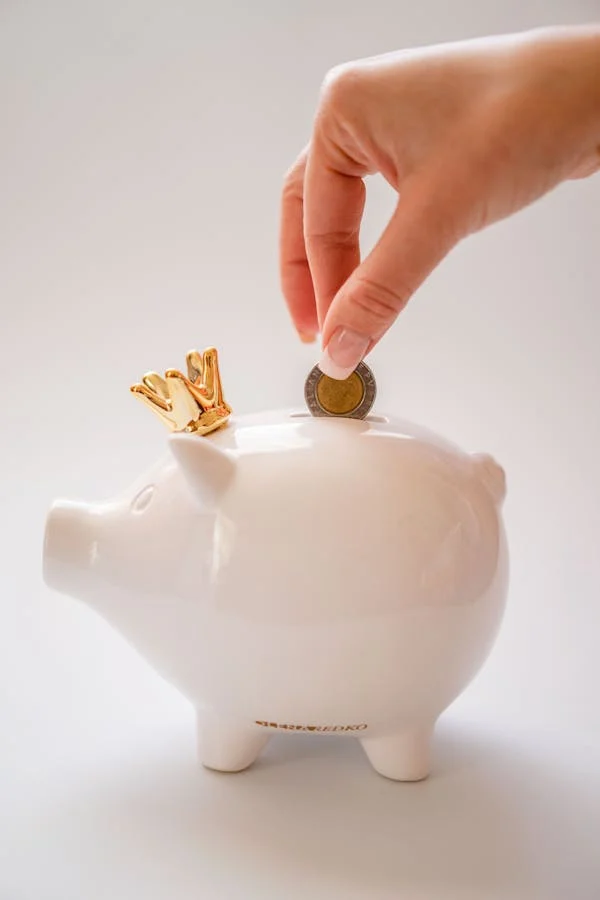|
Getting your Trinity Audio player ready...
|
The Leverage of Compound Interest
Starting with $1,000 might seem little, but Albert Einstein allegedly referred to compound interest as the “eighth wonder of the world,” since reinvesting returns exponentially speeds up over time.
For instance, without any further contributions, $1,000 growing at 8% annually becomes $4,656 in 20 years.
Slashing the Monster of Inflation
Inflation causes cash holdings to drop by about 3% in purchasing value annually. Parking $1,000 in a high-yield savings account still falls short of stock market returns, which have historically run between 7% and 10% yearly.
Therefore, even small amounts of bonds or stocks help to preserve and increase your capital in real terms.
Psychological Flow
Investing—even a little amount—helps to develop financial discipline and confidence. First-time investors often overcome inertia by means of scheduled dollar-cost averaging and easily available ETFs. That first step turns savings from a passive growth engine into an active one.
Defining Objectives & Evaluating Risk
Clearly Specify Your Time Horizon
- Short-term (1–3 years) protect capital; think about short-term bonds or high-yield savings.
- Medium-Term (3–7 years) mix bonds using dividend ETFs or balanced funds.
- Long term (7+ years) concentrate on equities (index/sector ETFs, growth stocks) to maximise compounding.
Analyze Your Risk Profile
Age, income consistency, and emotional fortitude all affect risk tolerance. Harvard Business Review counsels mapping your comfort with drawdowns: If you would panic at a 10% decline, cap equity exposure in your portfolio between 40% and 60%.
Emergency Fund Initial
Make sure a 3–6 month cash buffer in a high-yield savings account or money-market fund protects against forced withdrawals and market timing mistakes before investing.
Top Investment Vehicles for $1,000
Low-Cost Index Mutual Funds & ETFs
Broad diversification; minimal fees (<0.10% expense ratio); market-tracking performance.
Action: Open a brokerage account at Fidelity or Schwab (zero commissions) and purchase one or two ETFs; examples are Vanguard Total Stock Market ETF (VTI) or Schwab U.S. Broad Market ETF (SCHB).
Robo-advise
Automated portfolio building, tax-loss harvesting, automatic rebalancing—why?
Betterment, Wealthfront, SoFi Invest.
Action: Invest $1,000 in a risk profile, let algorithms maximize asset allocation.
Fractional Share Purchasing
Why: Provides small-dollar access to highly expensive blue-chip stocks (Amazon, Berkshire Hathaway).
Platforms include Fidelity, M1 Finance, and Robinhood.
Purchase $100 increments in market leaders to diversify outside of ETFs.
ETFs in Dividend-Growth Stocks
Why: Compounding dividend-generated income and growth.
Vanguard Dividend Appreciation ETF (VIG), SPDR S&P Dividend ETF (SDY), are two examples.
Action: Set aside $500 in two premium dividend stocks—e.g., JNJ, KO—and $500 in an ETF.
Peer-to- Peer Funding
Why: Under financing consumer loans, higher yields (~6%–10%).
Platforms: Prosper and Lending Club.
Default risk: Reduce by modest allocations (<10% of $1,000) over several dozen loans.
Real Estate Crowdfunding and REITs
Why: Real estate exposure free of property management?
Platforms include Fundrise, RealtyMogul, and public REIT ETFs including VNQ.
Invest $250 in a diversified eREIT and another $250 in a VNQ ETF to balance public and private ownership.
High Yield CDs and Savings Accounts
Why: On idle cash, risk-free 3%–5% APY.
For consistent returns, park up to $500 in the savings or ladder three CDs from an online bank.
Effects & ESG Investing
Why: While getting market returns, match capital with personal values.
Platforms: Calvert’s mutual funds; iShares ESG Aware MSCI USA ETF (ESGU).
Action: Express intent with $200 in an ESG ETF without compromising performance.
Self-Investment in Skills and Education
Why: Usually, raising your earning power yields maximum return on investment.
Online courses (coursera, udemy), certifications (Google, CFA), business books.
Action: Invest $200 on a pertinent course to boost side-hustle or pay-back income.
Creating Your $1,000 Portfolio, Methodically
Choose a Brokerage Free of Commissions
Top picks for beginners are Fidelity, Charles Schwab, Robinhood. Check fractional shares, DRIPs, and simple ACH funding.
Sort and Allocate Diverse
One “Core-Satellite” mix example:
Core (60%) VTI or SCHB index ETF ($600)
Satellite (40%) o Dividend ETF ($200)
eREIT (Fundrise) ($100) o fractional high-growth stock (AMZN) ($100).
Automated Donations
Arrange a $50 monthly ACH transfer to your brokerage. Dollar-cost averaging teaches discipline and lowers timing risk.
Start DRIPs and Auto-Rebalancing
Automatically reinvest dividends and allow robo-advisor rebalancing to preserve target allocation free from human effort.
Track every three months and rebalance. Once year Track performance, yield, and allocation drift using Morningstar Premium, Personal Capital, portfolio apps. Rebalance anytime any holding deviates more than five%.
Strategically Based Advice Supported by Experts
The 90/10 Rule of Buffett
Minimizing fees and volatility, allocate 10% to short-term Treasuries and 90% to a low-cost S&P 500 index fund.
Asset Classes of Kiyosaki
To ride many economic cycles, balance real estate, stocks, small business, commodities, and paper assets (bonds/cash equivalents).
Effect of Biases in Behavior
Set guidelines for buying, selling, and rebalancing to override emotions; beating fear and greed counts more than choosing the “best” stock.
Make Use of Tax-Advantaged Accounts
First maximize Roth IRA or 401(k) contributions; then invest $1,000 in taxable accounts just after obtaining possible tax savings.
Remain on Course
Pay attention to your plan; ignore market noise. Long-term, disciplined investors beat those who market-time according data.
Fallacies to Steer Clear Of
• Pursuing High Yields: Often indicating unsustainable payouts or risk, yields above 10%
• Neglecting Fees: Choose low-cost providers; trade commissions, expense ratios, and platform fees erode returns.
• Lack of Diversification: Spread over asset classes, over-concentration increases risk.
• Ignoring Emergency Fund: Never put money you cannot afford to lose temporarily under investment.
• Frequent trading: Buy-and- hold favors as poor timing and expenses lower net gains.
Success Stories from Real Life
Teacher to Investor: Emma, a 22-year-old recent graduate, set $100/month auto-deposits, allocated $1,000 in a robo-advisor, and watched her account rise to $8,500 in five years—funding her MBA down payment.
Carlos started a print-on-demand T-shirt side business out of $500 and a dividend ETF. His side business today pays his Netflix bill and pays for his yearly conference travel.
An Emotional Chronicle: From Overpower to Ownership
Based on the APA’s most recent Stress in America survey, seventy-two percent of Americans said they felt stressed about money at least some of the previous month. That statistic was painfully personal for Denver-based graphic designer Sarah Thompson, 34.
The Thompsons discovered they were using credit cards and emergency savings to pay rent and groceries after her husband lost his job in a tech slump.
Every month seemed like swimming across a lake. Sarah worked extra hours on weekends freelancing, but the growing debt and sleepless nights left her stressed and tired. She knew she had to have a better plan, but her options were few, given just $1,000 saved.
Then, following advice from another freelancer, she perused outlining how even modest passive-income investments might reduce financial stress and boost mental health.
Drawn in, Sarah dug into “7 Ways to Invest $1,000,” learning about dividend stocks, ETFs, and robo-advisors. She understood she could leverage low fees, diversification, and automatic rebalancing by distributing her $1,000 among a low-cost S&P 500 ETF (VTI), a target-date retirement fund, and a robo-advisor account. S
She opened a Fidelity account—one of NerdWallet’s best brokers for beginners—with shaking fingers and set $400 for VTI, $300 for a target-date fund, and $300 for Betterment’s automated portfolio.
Six months later, the first dividend check showed $15.28.
It was evidence that her money was working, even while she slept, not life-changing money. Sarah got a flash of hope. She started dollar-cost averaging biweekly $50 contributions, a tactic Investopedia says “particularly attractive for new investors” since it helps to smooth out market swings. More than the previous automated transfer, each one gave her more confidence.
Sarah watched her account climb to $2,500 over the next two years. With a 19% APR credit card payoff, she freed $150 a month. She doubled her $100 biweekly contributions with those savings.
Her portfolio by year three came in at $5,000, more than three months’ living expenses would demand. The change occurred emotionally as much as financially. She planned a modest family trip to the Rockies, something she thought impossible just a few years ago; she no longer lay awake dreading the next utility bill.
The story of Sarah shows the strength of strategic investment and compound interest. Investopedia claims that, without further contributions, compounding $1,000 into over $4,600 in 20 years at an 8% return.
The Rule of 72 indicates, meanwhile, that her money would double almost every nine years at an 8% return. But the peace of mind counts more than anything else. Knowing each dollar spent develops not only wealth but also emotional resilience, so Sarah trades panic for empowerment.
Sarah guides other creative freelancers today by sharing her path via web seminars and blog entries. Advice she wishes she had sooner: she emphasizes the need of beginning small, automating investments, and using low-cost platforms. “Your first $1,000 isn’t only a number,” she says to them. “This is the first step toward owning your future and the germ of security.”
Frequently Asked Questions
1. Using just $1,000, how should I start investing?
Your first action is opening a commission-free brokerage account; top picks for beginners without minimums are Fidelity, Charles Schwab, and Robinhood.
Then choose a diversified vehicle: for basic exposure, think about a broad-market ETF such as Vanguard Total Stock Market (VTI); for automatic rebalancing, use a robo-advisor. Set aside in increments—say, $500 in VTI, $500 in Betterment—then sign up for DRIPs to reinvest dividends free from fees.
Eventually, use dollar-cost averaging to automatically make continuous contributions to reduce timing risk and develop discipline. Even modest, consistent investments increase confidence and hasten compounding.
2. Why Is Dollar-Cost Averaging Effective and What Is It?
Dollar-cost averaging (DCA) is the consistent, fixed amount one invests at regular intervals, independent of market swings. This strategy lessens the emotional weight of market timing and, over time, lowers the average cost per share.
Because DCA promotes consistency, fights fear during recessionary times, and uses erratic markets to your advantage, it is “particularly attractive for new investors”. Investing $100 a month in an S&P 500 ETF during market highs and lows, for instance, helps to develop long-term discipline and smooths entrance points. Over decades, DCA can produce results on par with timing the market, and often failing, trying.
3. Compound interest allows $1,000 to grow how much?
By reinvesting earnings to produce “interest on interest,” compound interest can greatly increase returns over time. Assuming all gains are reinvested, $1,000 invested at an 8% annual rate, for example, increases to about $4, 660 after 20 years.
Dividing 72 by the interest rate helps one estimate doubling time: at 8%, your money doubles every nine years. Although past performance does not ensure future results, historical U.S. stock returns average 7%–10% annually (including dividends), showing how small amounts can compound into significant portfolios.
4. Investing $1,000 carries what risks?
There is no investment free of risk. Short-term losses may result from market volatility; a concentrated $1,000 position in one stock increases company-specific risk. Low-cost providers (expense ratios <0.10% for ETFs) should be chosen as brokerage fees and expense ratios can reduce returns.
Investing money for emergencies can also cause premature sell-offs; always keep a 3–6 month emergency fund in a high-yield savings account first. Diversification, DCA, and long-term planning help to reduce these risks.
5. Should I invest my $1,000 or pay off debt?
Sort high-interest debt first for investment. Eliminating, say, a 20% APR credit card debt guarantees a “return” that exceeds average market increases.
Once high-cost commitments are taken care of, distribute extra money to long-term growth-oriented investments. For modest interest debt—that is, rates between 5% and 7%—think about half to a diversified ETF portfolio and half to debt reduction. This hybrid strategy creates a strong financial basis by balancing risk-lowering with wealth-building.
Final Thoughts
By using compound interest, diversification, and disciplined savings, wise $1,000 investments can start a multi-decade road toward financial freedom. Starting a commission-free brokerage or robo-advisor account, choose low-cost ETFs and automated plans to make sure your money works for you around the clock.
Use dollar-cost averaging to help to smooth out market volatility and reinvest every dividend to maximize compounding power. This is the time to act: divide your $1,000 seed, sign up for DRIPs, and arrange regular payments—even $50 monthly can build up life-changing riches. Use a basic spreadsheet or a portfolio app to track your development; review yearly and rebalance as necessary.
Start today by hitting “fund account,” making your first investment, and releasing emotional relief from knowing you control your financial future. Your future self will appreciate you now, sowing the seeds of wealth.














